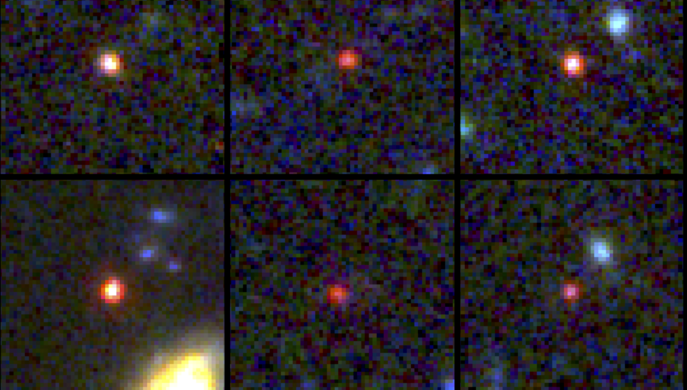James Webb Telescope spots galaxies from the dawn of time that are so massive they 'shouldn't exist' [View all]
By Ben Turner published about 3 hours ago
The James Webb Space Telescope spotted six gigantic galaxies, each roughly the size of our own Milky Way, that formed at a bafflingly fast pace — taking shape just 500 million years after the Big Bang.

An image of the six massive galaxies, whose ages range between 500 to 800 million years after the Big Bang. The galaxy on the bottom left contains as many stars as the present-day Milky Way, but is 30 times more compact. (Image credit: NASA, ESA, CSA, LABBE (Swinburne University of Technology) : G. Brammer (Niels Bohr Institute’s Cosmic Dawn Center, University of Copenhagen))
The James Webb Space Telescope has discovered a group of galaxies from the dawn of the universe that are so massive they shouldn't exist.
The six gargantuan galaxies, which contain almost as many stars as the Milky Way despite forming only 500 to 700 million years after the Big Bang, have been dubbed "universe breakers" by the team of astronomers that spotted them.
That's because, if they're real, the discovery calls our entire understanding of galaxy formation into question.
"It's bananas," co-author Erica Nelson(opens in new tab), an assistant professor of astrophysics at the University of Colorado Boulder and one of the researchers who made the discovery, said in a statement(opens in new tab). "You just don't expect the early universe to be able to organize itself that quickly. These galaxies should not have had time to form."
Scientists don't know exactly when the first clumps of stars began to merge into the beginnings of galaxies, but cosmologists previously estimated that the process began slowly taking shape a few hundred million years after the Big Bang. Currently accepted theories suggest that 1 to 2 billion years into the universe's life, these early protogalaxies reached adolescence — forming into dwarf galaxies that began devouring each other to grow into ones like our own.
More:
https://www.livescience.com/james-webb-telescope-spots-galaxies-from-the-dawn-of-time-that-are-so-massive-they-shouldnt-exist
